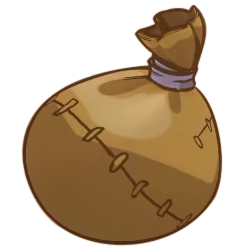Squares are defined as polygons which are defined as having all straight lines.
but muh mathematical breakthru!!!
I bet there exists a non-Euclidean surface such that all these lines are straight.
A cone should do the trick, no?
Spheres and hyperbolas. EDIT: oh they mean this specific shape not just any non-Euclidean square, so those won’t work.
I haven’t thought about a cone much but I think no.
The definition of a square is a polygon with four equal sides and four equal angles (nothing about 90 degrees and nothing about internal vs external angles since people love to get hung up on that)
A cone is half a hyperbola but I think without the symmetry of a hyperbola you can only get two angles equal at a time or two sides equal at a time.
You have the section of the smaller circle wrapping around the back of a narrower section of the cone, a right angle and then a straight line running down the side of the cone, another right angle in the other direction, then the section of the larger circle, this time going around the front of the cone, another right angle, and then the straight line completing the shape.
But you are right, the circle sections are not geodesics on that manifold, so not ‘straight’ by the most reasonable extension of that word to non -euclidian geometries. They’d be more like lines of latitude in that they seem straight from the outside, but in the context of that manifold are curved.
A cylinder would allow all geodesics, but then it would still have two 90 degree angles and two 270 degree angles so still not a square. I think it would be a trapezoid/trapezium, and might be a parallelogram depending on what definition you use.
There might be some crazy custom shape that makes the angles on the more complete circle segment actually 90 degrees but I don’t think there’s a common easy-to-conceive shape that works.
still have two 90 degree angles and two 270 degree angles
But you just said internal vs. external angles was a distraction that people shouldn’t get hung up on.
To be clear, apart from that one bit, I agree with you completely. I don’t even necessarily disagree with what you said back there per se. I just don’t think it was useful to bring it up because even if it isn’t explicitly in the definition of a square, it is an implicit assumption that when talking about the angles of a shape, you’re always talking about all internal angles (or, equivalently, all external angles, just no mixing), so getting “hung up on” internal vs. external angles is not a bad thing.
Also, the angles should be internal angles. This has two 90 degree angles and two 270 degree angles.
don’t you see where the line twists just there?
Not sure what you mean, sorry.
Oh no! Are you telling me, OP didn’t post a square??? ;_;
This is some typical plucked chicken shit
Yes. And the “broad flat nails” retort for this is “with parallel opposing sides.”
While I know this is supposed to be a joke, surely the angles of a shape must be on the inside of the shape.
Eh, going back when I was learning proofs in high school…
A square was 4 equal length sides arranged in two sets of parallel lines with four 90° right angles.
Two sets of parallel lines are necessary to make a rectangle, and a square is just a rectangle with equal sides.
Proofs are all about working the way through each step to getting to a distinct shape defined by those smaller steps. All squares are rectangles, but not all rectangles are squares. Technically if in remembering correctly, rectangles are also trapezoids, just with 90° right angles.
Parallelograms, not trapezoids. Kind of. Maybe. Or maybe trapeziums.
See… some define trapezoid as specifically one set of parallel sides (originally trapezium). Some as no parallel sides (originally trapezoid) Those two were swapped by some asshole, and then swapped back in England but not in America.
Though most now just say a trapezoid (or trapezium in England) is at least one set of parallel sides, which makes parallelograms a type of trapezoid. Which does make a rectangle a type of trapezoid.
They call only one pair of parallel sides a proper trapezoid instead.
I totally forgot that parallelograms were a thing in all that. And I never even considered naming differences over time.
Lol
I just read another comment here pointing out that square is a polygon, which requires having only straight lines.
I think this would be a stronger argument.
I’m not aware of any shape that is defined by the angles of its outsides.
I think what the previous poster is saying is that the image does not have four 90° angles, but instead it has two 90° and two 270° angles.
…I have no idea if that’s an actual deal breaker, but the logic is sound.
requires having only straight lines.

I suspect these lines are straight on a sphere. What we’re seeing is a square on a projected sphere.
AI when I ask it to do most things…
If you didn’t tell the AI which geometry to use, this would still be correct.
BEHOLD! PLATO’S MAN!
Topology is powerful wicked devil’s work.
It’s the union of two concentric shapes: an annular sector and a circle.
deleted by creator








